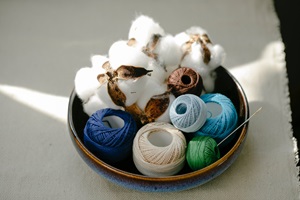Complete List of Raw Cotton Parameters

Below is the list of all the parameters which we need to understand if in textile or cotton business.
Complete List of Raw Cotton Parameters
- Staple Length:
It refers to the length of the individual cotton fibers. Staple length is usually measured in millimeters (mm) or inches (in).
- Micronaire:
It is a measure of the fineness of the cotton fibers. Micronair values range from 2.5 to 7.5, with lower values indicating finer fibers.
- Fiber Strength:
The force required to break a bundle of cotton fibers measures fiber strength, usually in grams per tex (g/tex).
- Color Grade:
It refers to the color of cotton fibers. The color grade scale ranges from 1 (white) to 8 (light gray).
Complete List of Raw Cotton Parameters
- Trash Content:
It refers to the non-lint material present in cotton bales, such as leaves, stems, and other foreign matter. It is typically measured as a percentage by weight.
- Moisture Content:
It refers to the amount of water present in the cotton fibers. Moisture content is typically measured as a percentage by weight.
- Uniformity Index:
It is a measure of the consistency of the cotton fibers in terms of length, strength, and micronaire.
- Fiber Fineness:
It refers to the diameter of the individual cotton fibers. We measure it in microns.
- Seed Coat Neps:
It refers to the small knots or bumps that can occur on the surface of cotton fibers due to the presence of seed coat fragments.
- Trash Grade:
It is a measure of the amount of foreign matter present in the cotton bales, including leaf, bark, and other debris. The trash grade scale ranges from 1 (cleanest) to 7 (most contaminated).
Cotton buyers and sellers utilize these parameters to assess the quality and value of cotton.